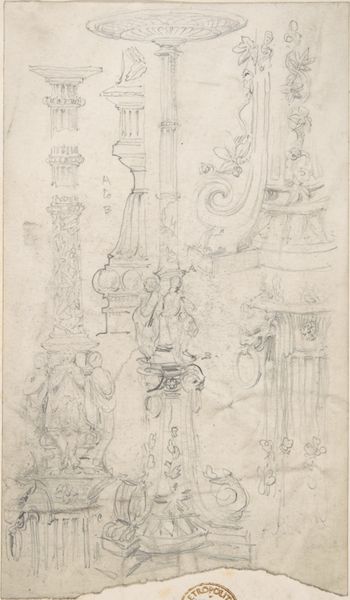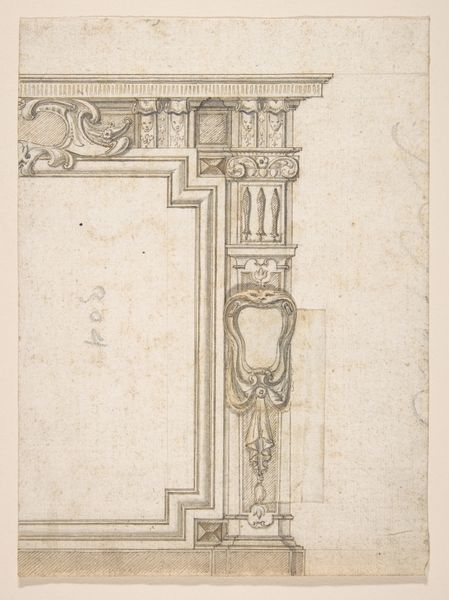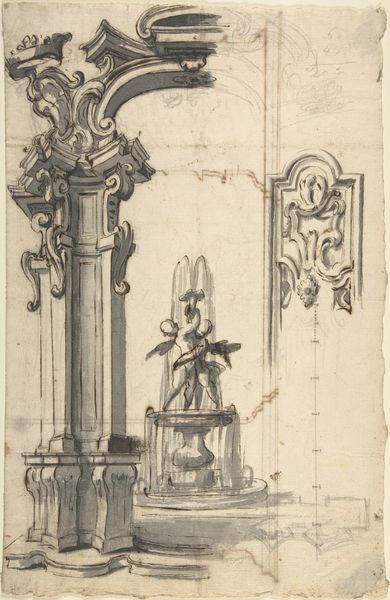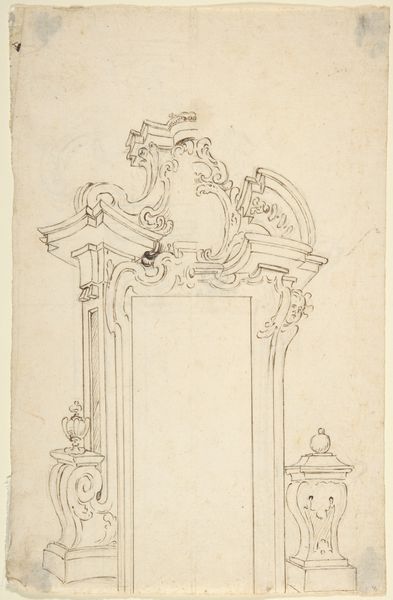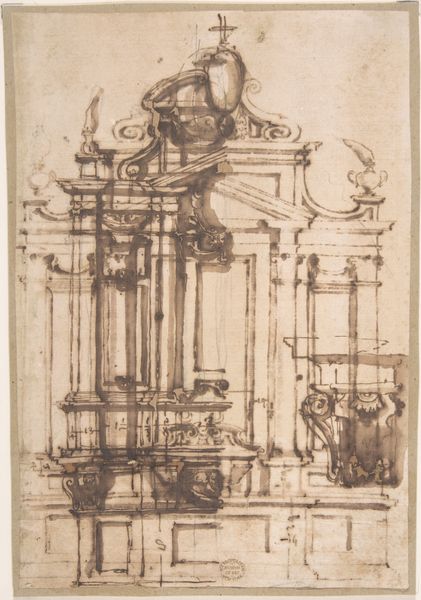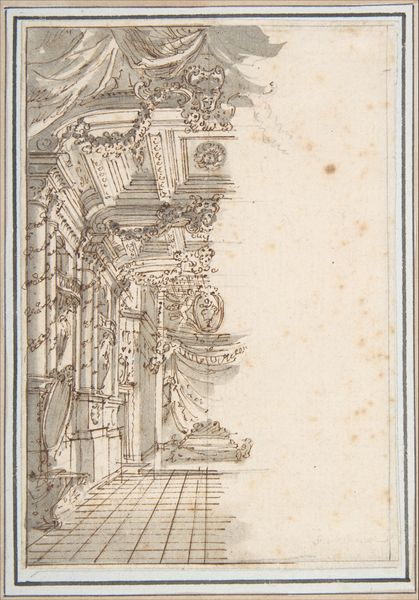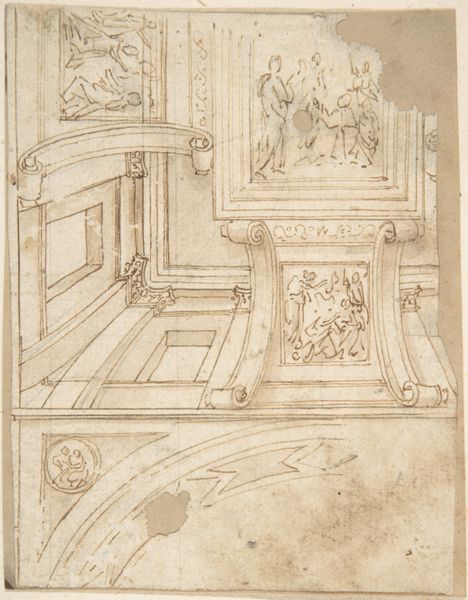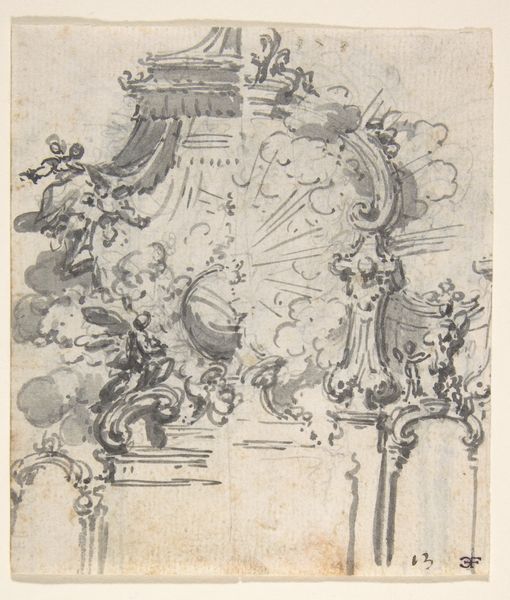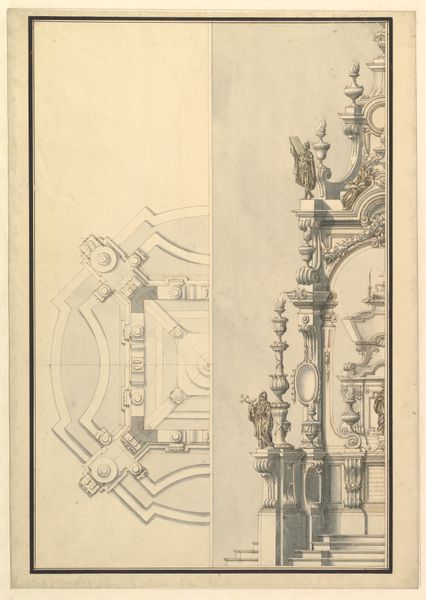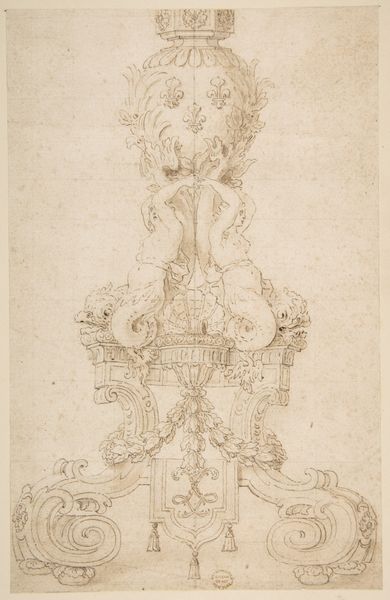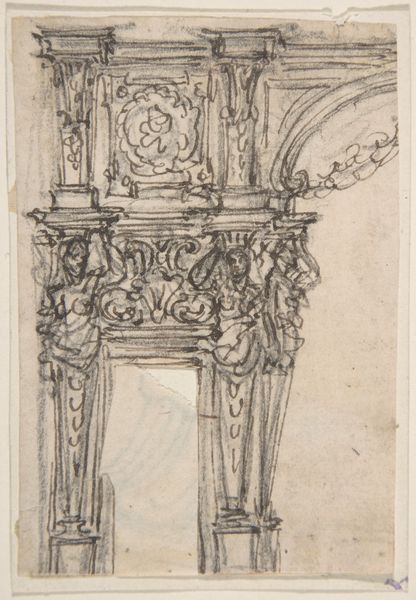
Design for a Chapel with Flight into Egypt as Altarpiece 1600 - 1700
0:00
0:00
drawing, pencil, architecture
#
architectural sketch
#
drawing
#
allegory
#
baroque
#
pencil sketch
#
landscape
#
figuration
#
pencil
#
line
#
history-painting
#
architecture
Dimensions: 9-5/8 x 4-9/16 in. (24.4 x 11.6 cm)
Copyright: Public Domain
Editor: So, this pencil drawing is titled "Design for a Chapel with Flight into Egypt as Altarpiece," dating from around 1600 to 1700, and the artist is unknown. It’s at The Met. The detail is incredible, especially considering the medium, but it also feels…unfinished, almost like a glimpse behind the scenes. What stands out to you? Curator: The incompleteness you observe is typical for architectural drawings, especially those proposing elaborate structures during that period. Notice the prominent depiction of "The Flight into Egypt"—its central placement underscores the importance of narrative and religious doctrine in shaping public spaces. The question, though, becomes: whose narrative were these spaces meant to serve? Editor: Whose narrative? I’m not sure I follow. Curator: Consider the Counter-Reformation. The Catholic Church used art and architecture to reassert its authority, often commissioning grandiose projects to inspire awe and reinforce religious teachings. Would this chapel design have served to celebrate piety, or to broadcast power? Editor: So, this isn't just a beautiful sketch, it's potentially a piece of propaganda? That's a bit cynical, isn’t it? Curator: Not necessarily cynical, but critical. Historians examine the social functions of art. Churches weren’t just places of worship; they were vital stages for projecting influence and cementing social hierarchies. Notice the intricacy of the ornamentation. What level of society would be required to afford this ornamentation? Editor: Well, given the resources and labour necessary, likely wealthy patrons and high ranking clergy. That hadn't occurred to me. I was just seeing a pretty drawing. Curator: Precisely! And understanding *how* that beauty was deployed, its purpose and place within the wider power structures, helps us engage more deeply with the art. It forces us to move beyond aesthetics. Editor: Okay, I get it. Looking at the social implications makes you consider it more. It’s definitely given me a new perspective on architectural drawings and the power they represent.
Comments
No comments
Be the first to comment and join the conversation on the ultimate creative platform.

